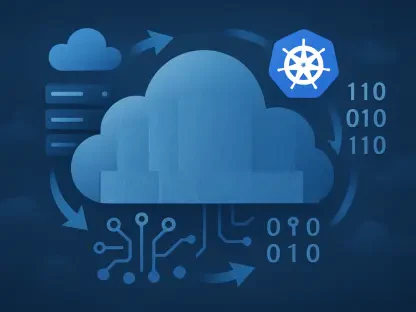Cloud computing offers businesses financial flexibility to scale resources, reduce infrastructure expenditure, and pay only for the services they use. However, many organizations experience “cloud sticker shock” when unexpected costs arise, overshadowing the anticipated savings. Effective cloud cost management is essential to harness the economic benefits of cloud computing while maintaining control over expenses.
The Challenge of Cloud Cost Management
Understanding Cloud Sticker Shock
One of the initial advantages of cloud computing is converting fixed costs into variable ones, theoretically reducing capital expenditures. However, transitioning to the cloud can lead to higher-than-expected expenses due to a lack of visibility and control over resources. A survey indicated that 66% of business executives reported their organizations’ cloud initiatives had not lowered the total cost of IT ownership. This highlights the need for a strategic approach to understanding and controlling expenditures. Businesses entering the cloud environment often underestimate the complexity involved. They may anticipate significant savings from eliminating physical infrastructure but fail to account for the intricacies of managing vast, scalable resources.
The Complexity of Cloud Pricing Models
Unpredictability in costs and the complexity of pricing models are significant barriers to cost control for many businesses. While cloud providers offer tools to track usage and costs, these tools often provide limited visibility, focusing on specific platforms rather than offering a holistic view of the cloud landscape. Effective cloud cost management requires detailed insights into resource use and expenses, identifying areas for optimization, and adjusting usage accordingly. The multitude of pricing models available—ranging from pay-as-you-go to reserved instances and spot pricing—can overwhelm businesses that lack a clear strategy, leading to inefficient resource allocation and soaring expenses. Additionally, the dynamic nature of cloud environments means that costs can fluctuate significantly, further complicating budget planning and financial forecasting.
Introducing Cloud FinOps
What is Cloud FinOps?
Cloud FinOps is an operational framework designed to bring financial accountability to the scalable and dynamic nature of cloud computing. It aligns cloud operations with business and financial goals by fostering collaboration among technology, finance, and business teams. Cloud FinOps emphasizes an integrated approach to resource management, aiming to manage and optimize the costs associated with cloud services effectively. By bridging the gap between these diverse functions, FinOps creates a cohesive strategy that addresses the complexities of cloud cost management and transforms financial oversight into an ongoing, collaborative process. This framework ensures that cloud investments are not only optimized for performance but also align closely with the organization’s broader economic objectives.
The Three Pillars of Cloud FinOps
Cloud FinOps is built on three key pillars: creating visibility, optimizing financial operations, and continuous improvement. Creating visibility involves leveraging tools and dashboards to track and report on cloud usage and costs, providing transparency that helps organizations understand their cloud consumption patterns and identify cost-saving opportunities. Optimizing financial operations focuses on implementing strategies to maximize the value of cloud investments, such as rightsizing resources and utilizing different pricing models. Continuous improvement emphasizes ongoing monitoring and governance to ensure that cost optimization efforts are maintained. This cyclical process facilitates proactive management of cloud resources and encourages a culture of continual enhancement, keeping pace with evolving technologies and business requirements.
Implementing Cloud FinOps
Creating Visibility
Gaining visibility into resource use and expenses is paramount for effective cloud cost management. Businesses need detailed insights into how much cloud capacity they consume, identify areas for optimization, and adjust their usage accordingly. Leveraging tools and dashboards to track and report on cloud usage and costs provides the necessary transparency to understand cloud consumption patterns and identify cost-saving opportunities. Such tools often provide valuable metrics and visualizations that make it easier to identify inefficiencies and areas where costs can be reduced without sacrificing performance or functionality. This level of insight is crucial for making informed decisions and ensuring that resources are allocated effectively across the organization.
Optimizing Financial Operations
Organizations can maximize the value of their cloud investments by implementing strategies such as rightsizing resources, utilizing different pricing models like reserved or spot instances, and eliminating unused services. These strategies help ensure that cloud resources are used efficiently and cost-effectively, reducing unnecessary expenses and optimizing financial operations. For example, rightsizing involves assessing the actual usage of resources and adjusting them to match demand, preventing overprovisioning and underutilization. Similarly, leveraging reserved instances can provide significant cost savings for consistent workloads, while spot instances can be used for flexible, non-critical operations. Eliminating idle or redundant services further trims costs and ensures that financial resources are directed toward essential operations.
Continuous Improvement
Ongoing monitoring and governance are essential to maintaining cost optimization efforts. Continuous improvement involves regularly reviewing cloud usage and costs, identifying new opportunities for optimization, and ensuring that cost management practices are consistently applied. This approach helps organizations stay on top of their cloud expenditures and adapt to changing business needs and cloud technologies. By setting up regular audits and performance reviews, companies can swiftly respond to changes in usage patterns and capitalize on new technologies and cost-saving opportunities. Continuous education and training for teams involved in cloud operations are also crucial, ensuring that they are well-versed in best practices and emerging trends in cloud financial management.
The Role of Culture and Collaboration
Fostering Cross-Departmental Collaboration
Successful implementation of Cloud FinOps requires a cultural shift within organizations, fostering cross-departmental collaboration and establishing best practices for cloud management. This process includes setting clear policies for resource use, establishing accountability for cloud spending, and ensuring all stakeholders are engaged in the cost management process. Collaboration among technology, finance, and business teams is crucial to aligning cloud operations with business and financial goals. Integrating these diverse perspectives helps create a more cohesive strategy that addresses all aspects of cloud cost management, from technical resource allocation to financial forecasting and budget adherence.
Establishing Best Practices
Establishing best practices for cloud management involves setting clear policies for resource use, establishing accountability for cloud spending, and ensuring all stakeholders are engaged in the cost management process. By fostering a culture of collaboration and accountability, organizations can effectively manage their cloud expenditures and achieve their financial goals. These best practices include regular training sessions, transparent communication channels, and designated roles and responsibilities related to cloud spending. By creating a structured yet flexible framework, businesses can navigate the complexities of cloud cost management with greater ease and precision, ensuring that financial and operational objectives are consistently met.
Leveraging Third-Party Providers and Automation
Third-Party Cloud FinOps Solutions
Third-party providers offer additional support through specialized Cloud FinOps software and services. These providers offer valuable insights, tools, and methodologies to help organizations optimize cloud investments. Examples include platforms like Inscape by CDW, which integrates with major cloud providers and offers operational insights, combining software with cloud management services that many organizations find beneficial. Such third-party solutions can bridge gaps in internal expertise and provide industry best practices, accelerating the adoption and effectiveness of Cloud FinOps initiatives. They also offer the scalability and flexibility needed to adapt to different cloud environments and business requirements, ensuring a more tailored and impactful approach to cost management.
Enhancing Efficiency with Automation
Leveraging automation and intelligent tools can enhance the efficiency of Cloud FinOps. Advanced analytics and machine learning algorithms can identify usage patterns and suggest optimizations, such as auto-scaling resources in response to demand or shifting workloads to regions with lower costs. Automated alerts and actions can help prevent overspending by notifying stakeholders of unusual spending patterns and enforcing spending limits. Implementing such automated systems reduces the risk of human error and ensures a more consistent and responsive approach to cloud management. This not only streamlines operations but also enables businesses to reap the full benefits of their cloud investments without the burden of manual monitoring and intervention.
Overcoming Challenges in Cloud FinOps Adoption
Addressing Organizational Silos
Challenges persist in adopting Cloud FinOps, including overcoming organizational silos, managing the complexity of multicloud environments, and staying abreast of rapidly evolving cloud technologies and pricing models. Organizations must break down traditional silos between departments to foster the collaboration needed for effective cloud financial management. This can be achieved through regular cross-functional meetings, shared goals, and joint accountability measures that ensure all teams are working towards common cloud cost management objectives. Managing the complexities of multicloud environments also requires a sound strategy that encompasses unified monitoring, cost allocation, and optimization tactics tailored to each cloud provider’s unique offerings and billing mechanisms.
Navigating Multicloud Environments and Evolving Technologies
Cloud computing provides businesses with the financial flexibility to scale resources according to their needs, significantly reducing infrastructure expenses. This pay-as-you-go model ensures companies only pay for the services they actually utilize, making it an attractive option for many. However, a phenomenon known as “cloud sticker shock” often occurs when unexpected costs arise, surprising many organizations and overshadowing the planned savings. Such hidden costs can come from overlooked storage fees, data transfer charges, or additional service expenses. This highlights the importance of effective cloud cost management, which is essential for businesses looking to take full advantage of the economic benefits offered by cloud computing. By implementing strategies for tracking and optimizing resource usage, organizations can maintain control over their expenses and truly benefit from the flexibility and scalability that cloud services offer. Proper management not only keeps costs predictable but also ensures the anticipated savings are realized, making the adoption of cloud technologies a financially sound decision.









